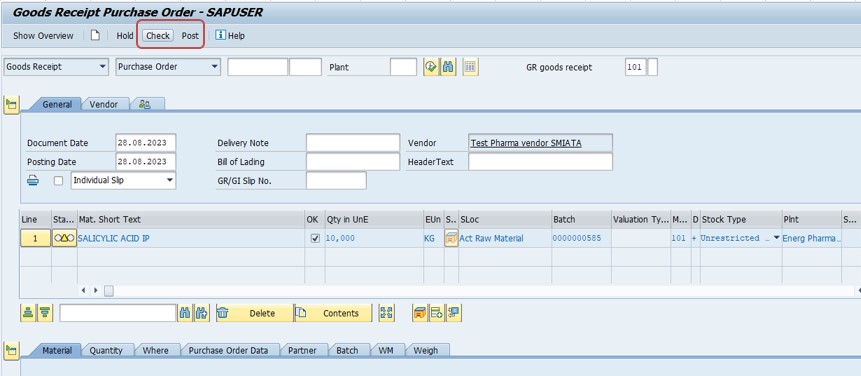SAP MM TUTORIALS-
Creating a Migo (GRR) in SAP: A Step-by-Step Guide-
Introduction-
SAP MIGO MM (Material Goods Movement): Complete Step-by-Step Guide in SAP MM
MIGO-
(Materials Management),"MIGO" stands for "Material Goods Movement" Efficient inventory management is crucial for businesses to ensure smooth operations, minimize costs, and meet customer demands. SAP (Systems, Applications, and Products) offers a comprehensive solution for inventory management through the Material Documents transaction (MIGO). In this blog post,we will explore the functionalities and benefits of SAP MIGO in optimizing inventory processes..
Understanding SAP MIGO:
SAP MIGO, short for Material Goods Receipt, is a transaction code used in the SAP ERP system to manage goods receipts, goods issues, and stock transfers. It provides a unified platform for various inventory-related activities, allowing businesses to handle their materials effectively.
Key Features and Functionalities:
1)Goods Receipt-: With MIGO, businesses can easily record the receipt of goods from vendors. This includes raw materials, finished products,or any other items required for production or sales.
2)Goods Issue-: MIGO also facilitates the recording of goods issues, enabling companies to track the movement of materials from their inventory for production, sales, or other purposes.
3)Stock Transfer-: Companies can transfer materials between different storage locations, plants, or company codes using MIGO, ensuring accurate tracking and control of inventory movement.
4)Quality Inspection-: MIGO supports integration with quality management processes, allowing goods to be subjected to quality checks before being received into inventory.
4)Batch Management-: For businesses dealing with products produced in batches, MIGO offers batch management capabilities to ensure proper tracking and control over batch-related transactions.
TCODE-MIGO-
GO TO -
Logistics -> Materials Management -> Inventroty Management -> Goods Movment -> Create-MIGO
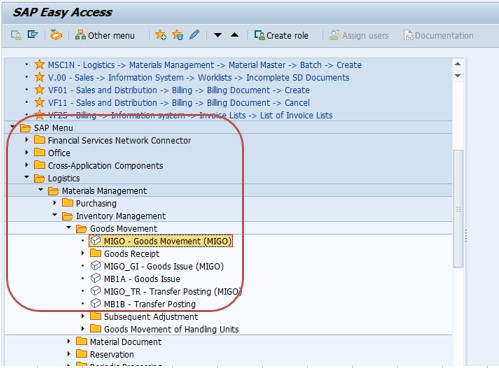
FOLLOW STEPS-
*)GO TO TCODE- MIGO
1)SELECT GOODS RECEIPT-
2)SELECT PURCHASE ORDER- 4500022485
3)SELECT DOCUMENT DATE- 28.08.2023
3)SELECT POSTING DATE- 28.08.2023
4)SELECT ITEM OK - OK
5)QTY IN DELIVERY NOTE - 10000, KG
6)SELECT CHECK - CHECK
7)SELECT POST - POST

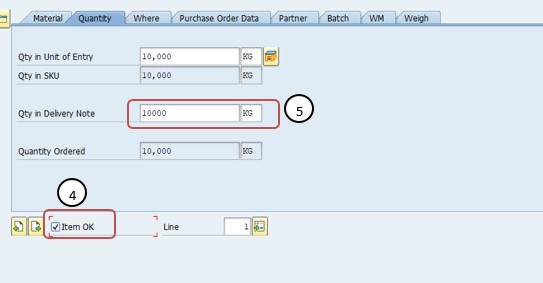
Go to TAB-
Material Information-:
he Material tab within the MIGO transaction primarily deals with the core element of any procurement activity - the material itself. It provides a centralized space to capture and manage critical details related to the materials being processed. The material information includes the material number, description, and associated unit of measure. This information ensures that the right item is being handled, preventing any confusion or discrepancies during the goods movement process.
Quantity Management-:
Accurate quantity management is essential to ensure that the right amounts of materials are received or issued. The Material tab in MIGO allows users to specify the quantity of the material being processed. Whether it's a receipt of goods from a vendor or an internal stock transfer, entering the correct quantity ensures proper inventory control. Additionally, the system may provide options for alternative units of measure, allowing for conversions that match business needs.
Purchase Order Data-:
Linking the procurement process to purchase orders is a fundamental aspect of efficient inventory management. In the Material tab of MIGO, users can input or reference purchase order data associated with the material being processed. This information includes the purchase order number, item number, and other relevant details. This linkage between goods movement and purchase orders not only facilitates tracking but also enables comprehensive reporting and analysis.
Batch-:
The Batch tab enables the management of batch-specific details, which is crucial for materials that are manufactured or procured in batches.Here's how you can effectively use this tab:
Batch Number-: Input the batch number assigned to the material. This is essential for tracking and tracing materials throughout their lifecycle.
Manufacturing Date and Expiry Date-: If applicable, provide the manufacturing and expiry dates of the batch. This is particularly important for materials with limited shelf lives.
Batch Quantity-: Specify the quantity associated with the particular batch. This aids in proper allocation and distribution of batch-specific materials.
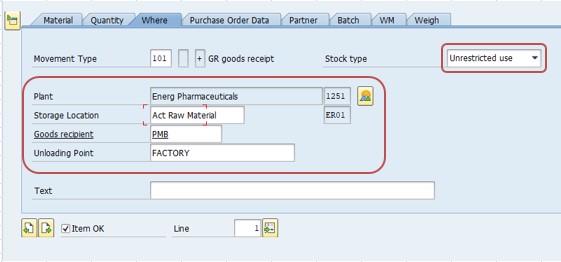
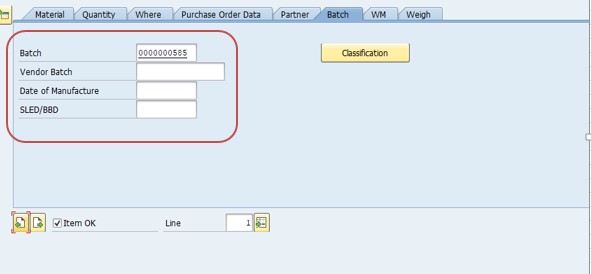
5)THEN CHEK AND SAVE PO-
